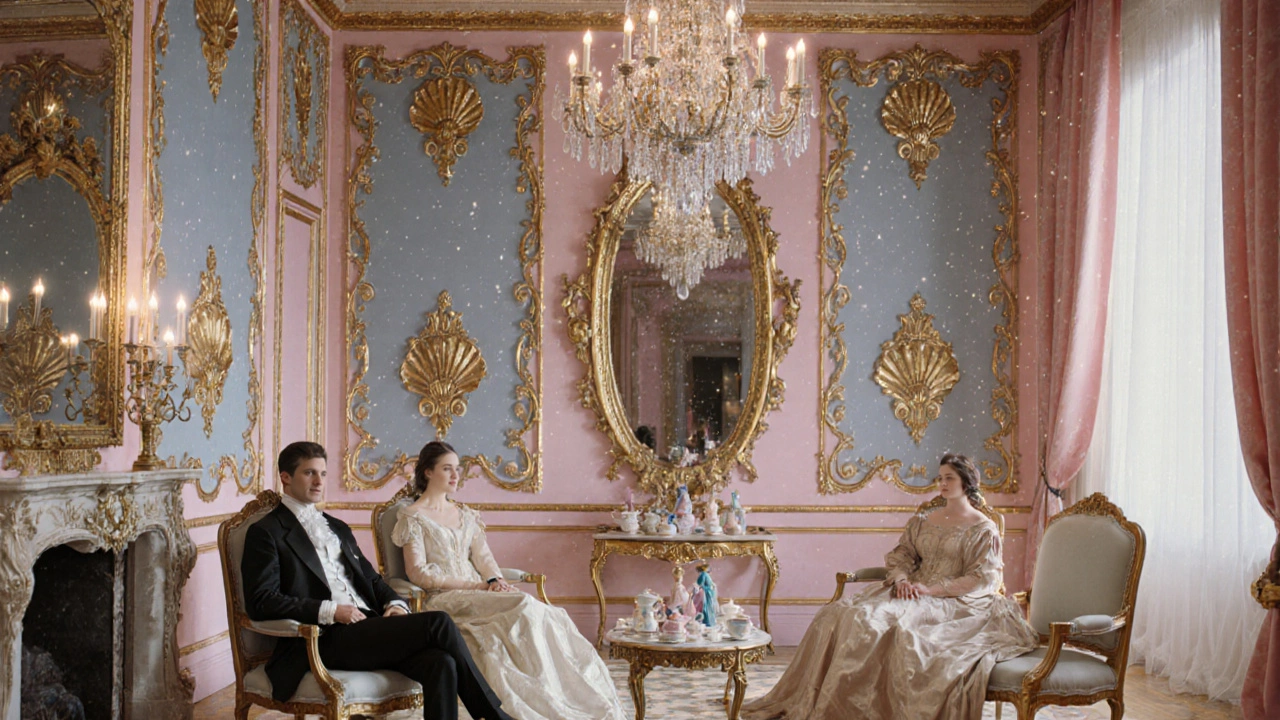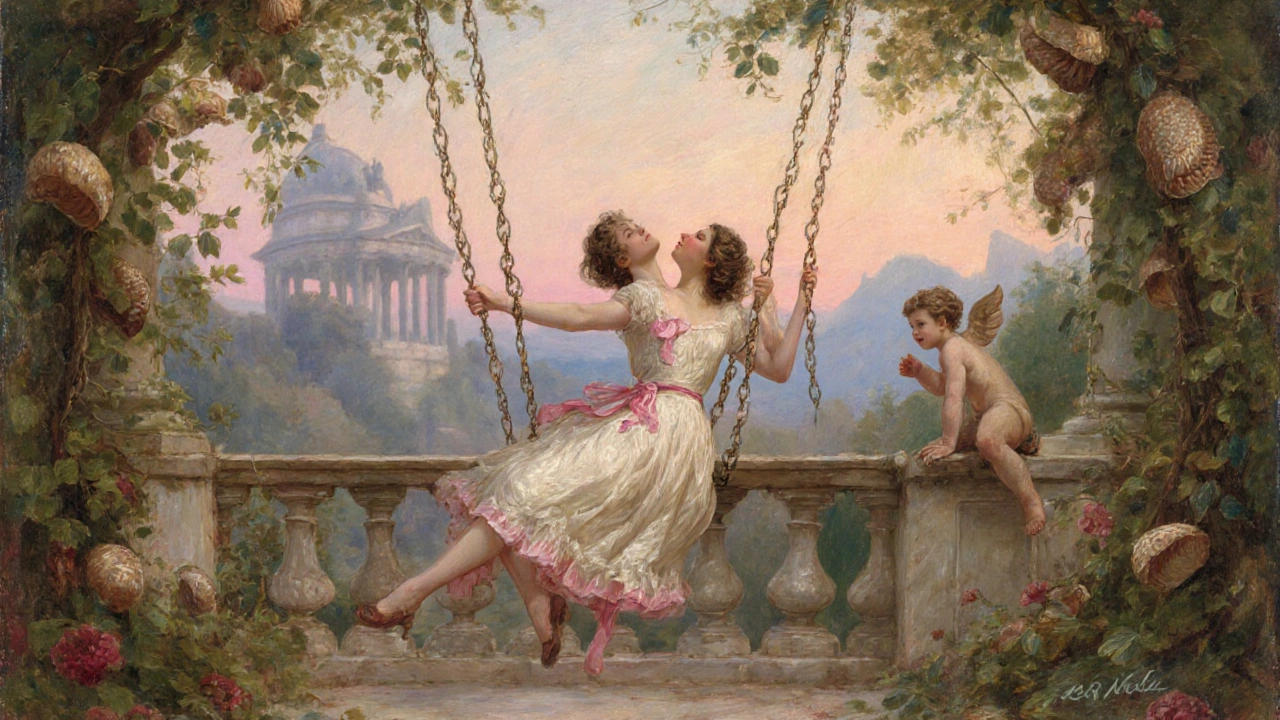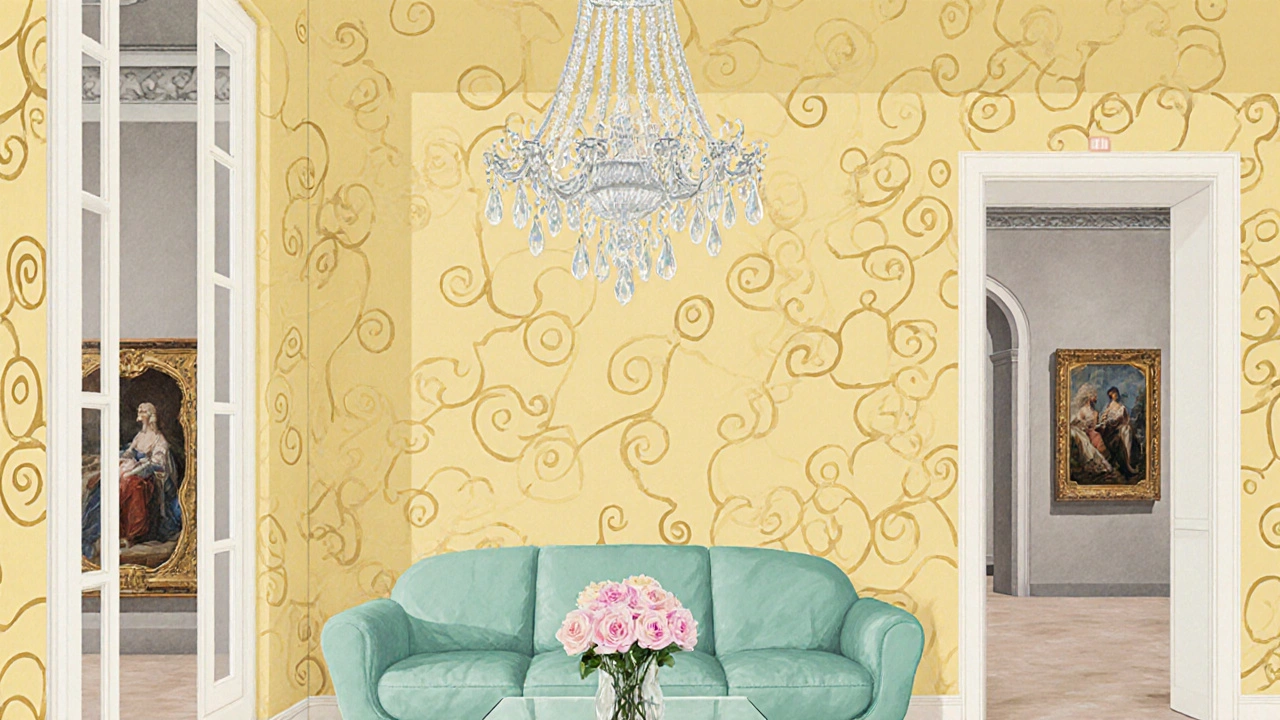Rococo Art: 18th‑Century Revolution Explained
 Oct, 18 2025
Oct, 18 2025
Rococo Art Identification Quiz
Rococo Art Identification Challenge
Test your knowledge of Rococo art characteristics and historical context. Answer each question and check your score at the end.
1. Which of these was a key characteristic of Rococo art?
2. Which artist is most associated with the Rococo movement?
3. What was the primary mood of Rococo art compared to Baroque?
4. Which element was most characteristic of Rococo interior design?
5. Which of these was a primary reason Rococo fell out of favor?
When you hear Rococo is a light‑hearted artistic style that blossomed in mid‑18th‑century France and spread across Europe, you might picture pastel rooms, playful cherubs, and curvy curves. The Rococo movement reshaped painting, interior design, furniture, and even garden layouts, turning the grand seriousness of earlier art into a celebration of pleasure.
Origins and Historical Context
Rococo emerged as a reaction to the weighty Baroque style characterized by dramatic lighting, strong contrasts, and monumental scale that dominated the 17th century. By the 1730s, French aristocracy, especially under Louis XV, sought a more intimate, decorative aesthetic for private salons. The shift coincided with the rise of the Enlightenment, where personal enjoyment and refined taste became cultural cornerstones.
Core Visual Characteristics
- Asymmetrical compositions that feel spontaneous.
- Light, pastel palettes-think soft pinks, sky blues, and buttery yellows.
- Organic, scrolling curves that mimic shells, vines, and scrollwork.
- Playful subjects: flirtatious couples, mythological nymphs, and mischievous putti.
- Delicate brushwork that creates a sense of airy movement.
These traits translate across mediums. In painting, artists like François Boucher produced lush, erotic scenes that glorified courtly love. In furniture, Rococo furniture featured cabriole legs, gilt ornamentation, and asymmetrical panels that invited casual conversation.
Key Artists and Signature Works
The most iconic painters include:
- Jean‑Honoré Fragonard who captured fleeting moments of romance in works like "The Swing" (1767).
- Jean‑Baptiste-Siméon Chardin offered a quieter, genre‑scene perspective with pieces such as "The Ray" (1728).
- Jean‑Marc Nattier known for aristocratic portraits that blended elegance with softness.
These artists shared an obsession with movement, softness, and an emphasis on pleasure rather than moralizing. Their brushstrokes were lighter than the heavy chiaroscuro of Caravaggio, reflecting the era’s taste for visual ease.

Rococo Architecture and Interior Design
Rococo’s architectural expression is best seen in the French royal palaces. The most famous example is Versailles where the Petit Trianon and its surrounding gardens display intimate salon rooms bathed in pastel hues. Inside, wall panels, ceiling frescoes, and stucco work illustrate fluid motion: gilt carvings of shells swirl around mirrors, and chandeliers sparkle like constellations.
Beyond France, the style traveled to Germany (the “Zwinger” in Dresden), Austria (the Schönbrunn Palace), and Italy (the Palazzo Valmarana). Architects often collaborated with painters to achieve a unified decorative program-an early form of interdisciplinary design.
Influence on Society and Everyday Life
Rococo was not limited to elite circles. Its motifs infiltrated porcelain factories such as Meissen in Germany, which produced delicate figurines and tableware featuring the same pastel shells and coquettish figures. Fashion also echoed the style, with silk gowns embroidered in asymmetrical ribbons and lace. The patron Madame de Pompadour used Rococo through commissioned art and interior projects to reinforce her political influence at court. Thus, the movement became a visual language for status, intimacy, and the pursuit of pleasure.
Rococo vs. Baroque & Neoclassicism
| Aspect | Baroque (17th c.) | Rococo (18th c.) | Neoclassicism (late 18th c.) |
|---|---|---|---|
| Overall Mood | Drama, grandeur, religious awe | Playful, intimate, decorative | Rational, heroic, restrained |
| Form | Strong symmetry, bold columns | Asymmetrical curves, scrolls | Clean lines, Greek‑Roman orders |
| Palette | Deep reds, golds, chiaroscuro | Pastels, soft whites, ivory | Muted earth tones, subdued whites |
| Typical Subjects | Religious scenes, heroic battles | Mythological love, garden fêtes | Classical history, civic virtue |
The table highlights how Rococo turned the power‑filled language of Baroque into a more personal, decorative conversation, only to be replaced a few decades later by the disciplined order of Neoclassicism.

Legacy and Modern Re‑Interpretations
Although Rococo fell out of favor during the French Revolution, contemporary designers have revived its spirit. The 21st‑century interior trend “New Rococo” mixes pastel palettes with modern minimalism, proving that the style’s love for comfort and elegance never truly disappeared. Museums such as the Louvre and the Metropolitan Museum of Art continue to showcase flagship Rococo rooms, drawing thousands of visitors each year.
Quick Checklist: Spotting Rococo Elements
- Are the lines soft and curvilinear rather than straight?
- Do the colors stay in a light, pastel range?
- Is there an abundance of decorative motifs like shells, scrolls, and cherubs?
- Does the composition feel intimate, as if inviting the viewer into a private scene?
- Are the subjects playful, romantic, or mythological rather than overtly religious or militaristic?
Frequently Asked Questions
When did Rococo first appear?
Rococo began in the early 1730s in Paris, flourishing during the reign of Louis XV and spreading across Europe by the 1750s.
How does Rococo differ from Baroque?
Baroque emphasizes drama, symmetry, and monumental scale, while Rococo prefers lightness, asymmetry, and decorative intimacy.
Who are the most famous Rococo painters?
Key figures include François Boucher, Jean‑Honoré Fragonard, and Jean‑Baptiste-Siméon Chardin.
Did Rococo influence furniture design?
Yes, Rococo furniture is noted for its cabriole legs, ornate carvings, and pastel upholstery that mirror the style’s overall aesthetic.
Why did Rococo fall out of favor?
The French Revolution (1789) and the rise of Neoclassicism brought a demand for moral seriousness and political symbolism, making Rococo’s frivolous elegance seem outdated.